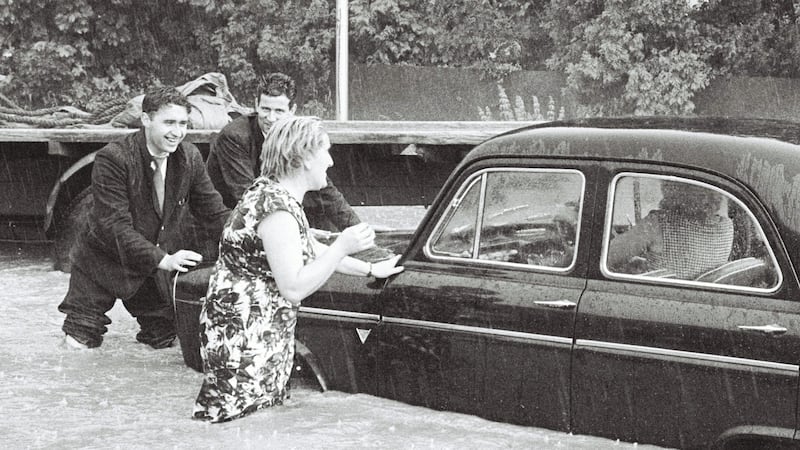One year after Storm Desmond marked the onset of the wettest Irish winter on record, Met Éireann does not anticipate issuing any severe weather warnings this week.
And the RTÉ journalist whose particular take on the elements made internet history says she has no regrets about the reaction to her broadcast from Galway's Salthill promenade.
"Of course it was a very hard time for a lot of homes and businesses affected, but I am glad I was able to give people a good old laugh – and I am still laughing," RTÉ reporter Teresa Mannion said.

Storm Desmond was already wreaking havoc over the western seaboard when Ms Mannion was filmed for RTÉ television news warning people not to make any “unnecessary journeys”.
Her report went viral, and remixes attracted several million hits online, with her favourite being the “Super Céilí” version.
Desmond was the fourth of 10 such storms over November and December 2015, which led to severe flooding in the midlands and west along the banks of the Shannon and tributaries.
Homes flooded
Some 540 homes were flooded, as were many businesses, and rainfall over the period was 189 per cent of normal, according to the Government’s report.
By December 29th, and with the arrival of Storm Frank, the southeast was also seriously affected. Met Éireann measured 602mm average rainfall in Ireland during the period.
The cost of damage to infrastructure was estimated at about €106 million, and the Government has committed €430 million towards increased flood relief measures from 2016 to 2022.
However, Ireland’s worst storm on meteorological record is still the Big Wind of 1839, while Storm Darwin on February 12th 2014, may have caused the most damage.
University College Cork (UCC) geographer Dr Kieran Hickey said that a "sting jet" within Storm Darwin intensified the level of havoc.
A “sting jet” is a jet of air which builds up several kilometres above the ground before descending over three or four hours in a “crescent moon” shape, and accelerates to more than 161km per hour.
During Storm Darwin , one of five depressions between 2013 and 2014 which claimed five lives and caused millions of euro in damage, the Kinsale gas platform off the Cork coast was hit by a 25m-high wave.
This was the biggest instrumental record of a wave in Irish waters, Dr Hickey told a recent Irish maritime history conference at UCC.
Met Éireann meteorologist Pat Clarke said that the unusually dry weather this November and early December is influenced by the Continental weather system which brought easterly winds, fog and frost.
A return to Atlantic weather with higher temperatures and more rain is expected this week, but there are no storms on the immediate horizon.
Meanwhile, Ms Mannion said she has been "inundated" with requests over the past year, and says she drew particular satisfaction from videos she made for the Road Safety Authority.
She has been tipped as one of the participants in RTÉ’s new series, Dancing With The Stars – an Irish version of Strictly Come Dancing. She even got another laugh this week from a suggestion that December 5th should be named as National Teresa Day.








